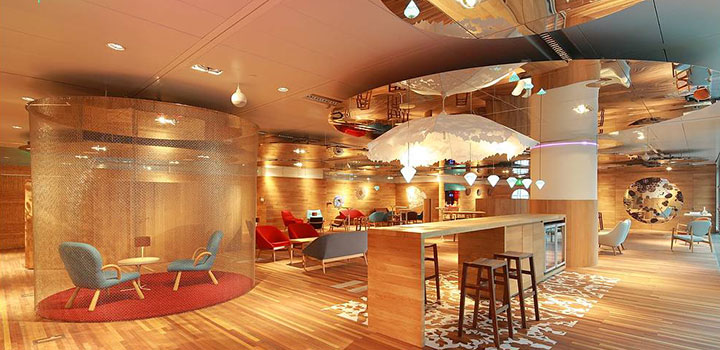Lend Lease Rolls CO2 Back to Pre-climate Change Levels
Article by Raefer Willis, originally published on LinkedIn

For over 650,000 years, atmospheric CO2 has never risen beyond 300ppm. Yet, in a short 65 years global levels have escalated to a frightening 400ppm and catalyzed climate change. These levels continue to rise rapidly everywhere… except inside Lend Lease’s Shanghai Headquarters. There, morning CO2 typically hovers around 280 ppm: levels unseen for over 150 years.
As a pilot project undergoing RESET™ certification, the office began tracking indoor air quality (IAQ) across 5 health parameters (see below) shortly after completion. The results are changing how we view the contribution of interior spaces to environmental regeneration.

The Lend Lease office checks all the boxes in terms of being a modern ‘green’ office: from access to natural light through to integrated recycling stations. It is also beautifully designed, especially in terms of artificial lighting, where the majority of lights were removed from the ceiling and brought closer to the occupants by using canopy like fixtures between the workstations.
Yet what truly sets the office apart is its integration and use of plants as machines for tempering indoor air quality. Here, Lend Lease pursued the oft quoted but rarely implemented figure of 8 plants per person, established by Dr. Wolverton during his research for NASA. The visual result is a layering of plants neatly arrayed atop filing cabinets and workspace dividers, set against green walls that cover most of the structural columns throughout the office.

Whereas green walls have become ‘de rigeur’ in most certified projects over the past few years, they are rarely integrated into work spaces (mostly being reserved for atriums and lobbies) and their performance is almost never quantified. In this case, performance is tracked minute by minute and reported in real-time to the staff’s smart phones as well as a dynamic certification plaque for staff and visitors alike
Acting as living machines, plants are only effective when they are healthy and thriving. In a recent tour of the office Steve Willet, Managing Director of Lend Lease joked, “The plants are definitely thriving. If the gardeners weren’t in here every week trimming the foliage we would be working in the Amazon.”

The numbers reflect this. Over the summer, morning CO2 levels were typically below 300 ppm: levels that pre-date climate change. What’s best is that the plants have barely even settled in and are still looking a bit sparse: they should be performing even more in 3-6 months. During office hours the levels are currently well within the 700 ppm limit for healthy interiors. This is in stark contrast to the average Shanghai office which hovers between 1200 and 1800ppm.
Although the office had slightly elevated levels of VOCs at the onset, these were rapidly brought within limits and now are typically below 0.1 ug/m3 (the health limit is 0.45). Many office interiors are 2-10 times above health limits even 1 year after completion.
Particulate matter, mostly handled by filters added to the fresh air system, averages below 35ppm, the health limit set by the EPA for PM2.5. All combined, these results make the Lend Lease office one of the healthiest in Shanghai.
The last remaining challenge in terms of IAQ is humidity. Like most buildings in Shanghai the K.Wah Center (in which the Lend Lease office is located) does not have a dehumidification system. As a result indoor humidity levels are typically identical to outdoor levels. In Shanghai, this means well over 75%. Lend Lease has identified this as an opportunity to increase comfort while reducing energy consumption within their own buildings: dehumidification requires less energy than heating and cooling per degree of perceived temperature. In other words, by lowering humidity levels 30-50%, interior temperatures can made warmer in summer and cooler in winter while achieving the same comfort level, resulting in potentially significant energy savings.

“Lend Lease is a global leader in health and sustainability,” says Willet. “In China, this will mean being able to offer clean air to our clients while further reducing energy consumption. In terms of research, we need to lead by example and prove results with hard data.”
In this case the data is not only excellent but it changes the paradigm for interior spaces. Consider for a moment that on a bad day the healthiest outdoor air in Shanghai is probably right next to the Lend Lease exhaust.
Up until now the focus for green interiors has been about making them less bad. Creating an interior with a positive environmental footprint has been viewed as virtually impossible. The Lend Lease office is challenging this notion and making us wonder how interiors can be used as machines for cleaning outdoor air. When the ‘waste’ air from a building is cleaner than the incoming air you know you’re onto something good.
All photos by Marković Nebojša



